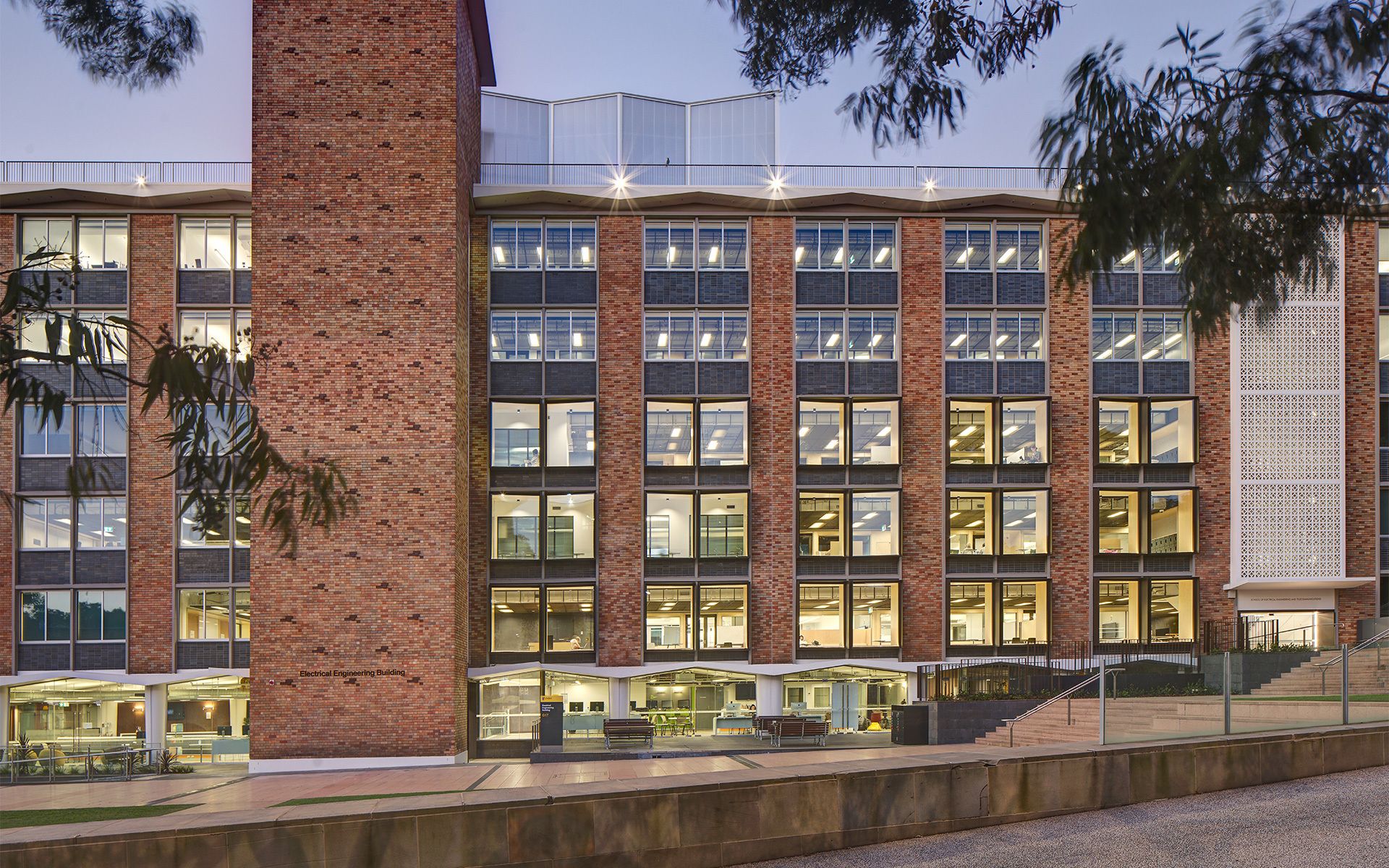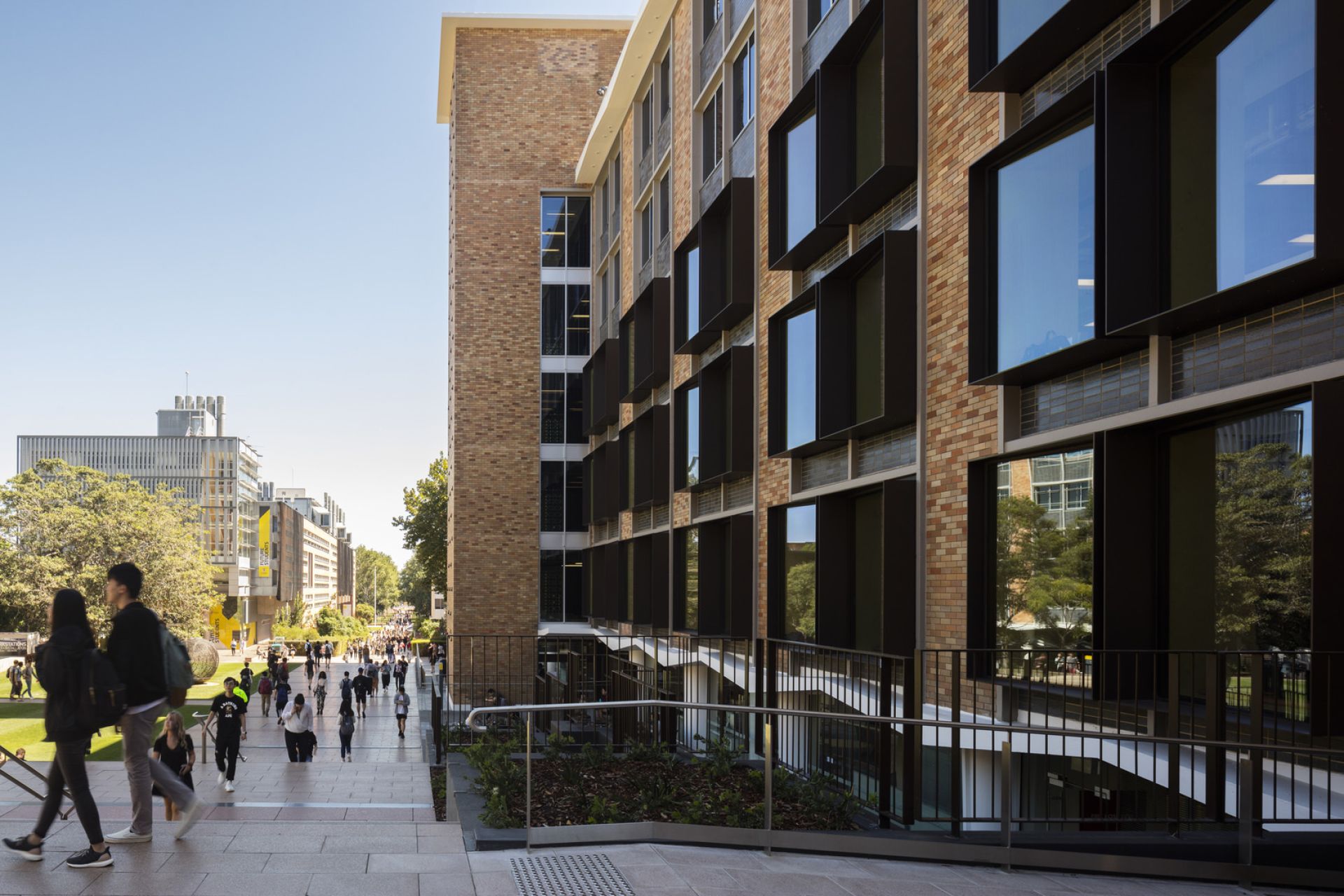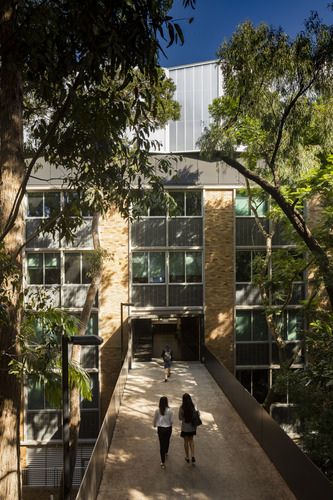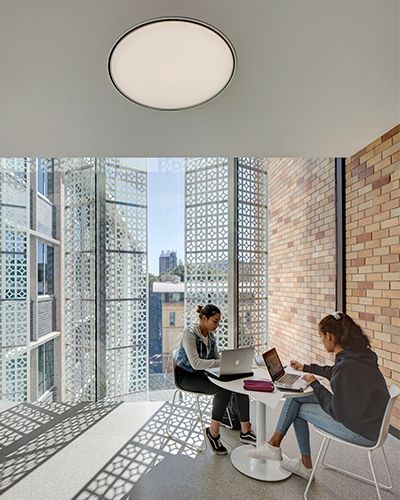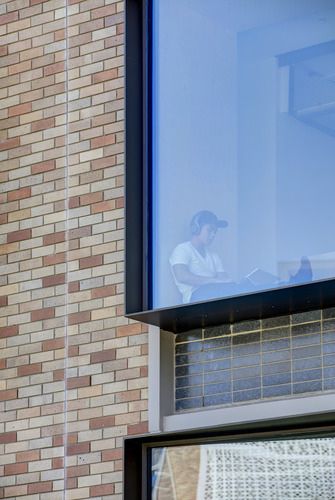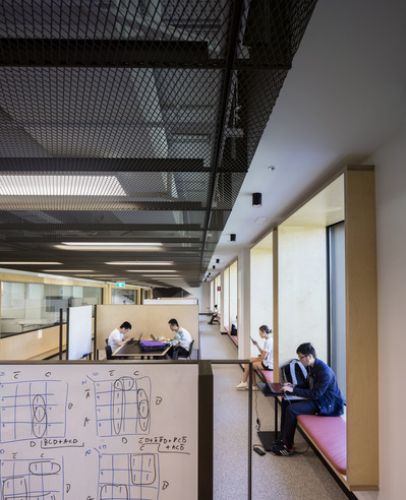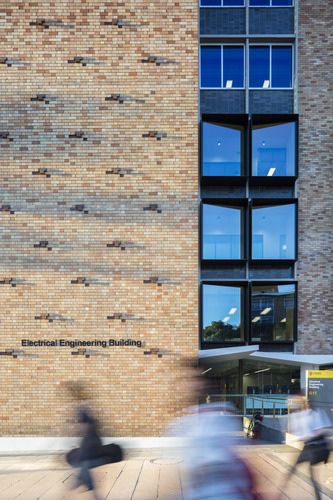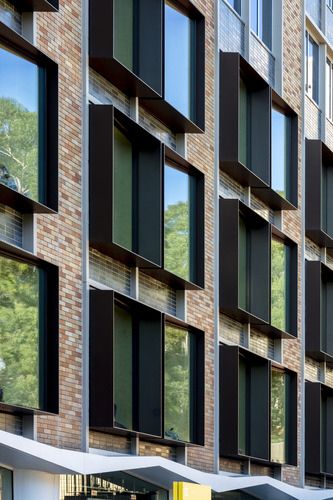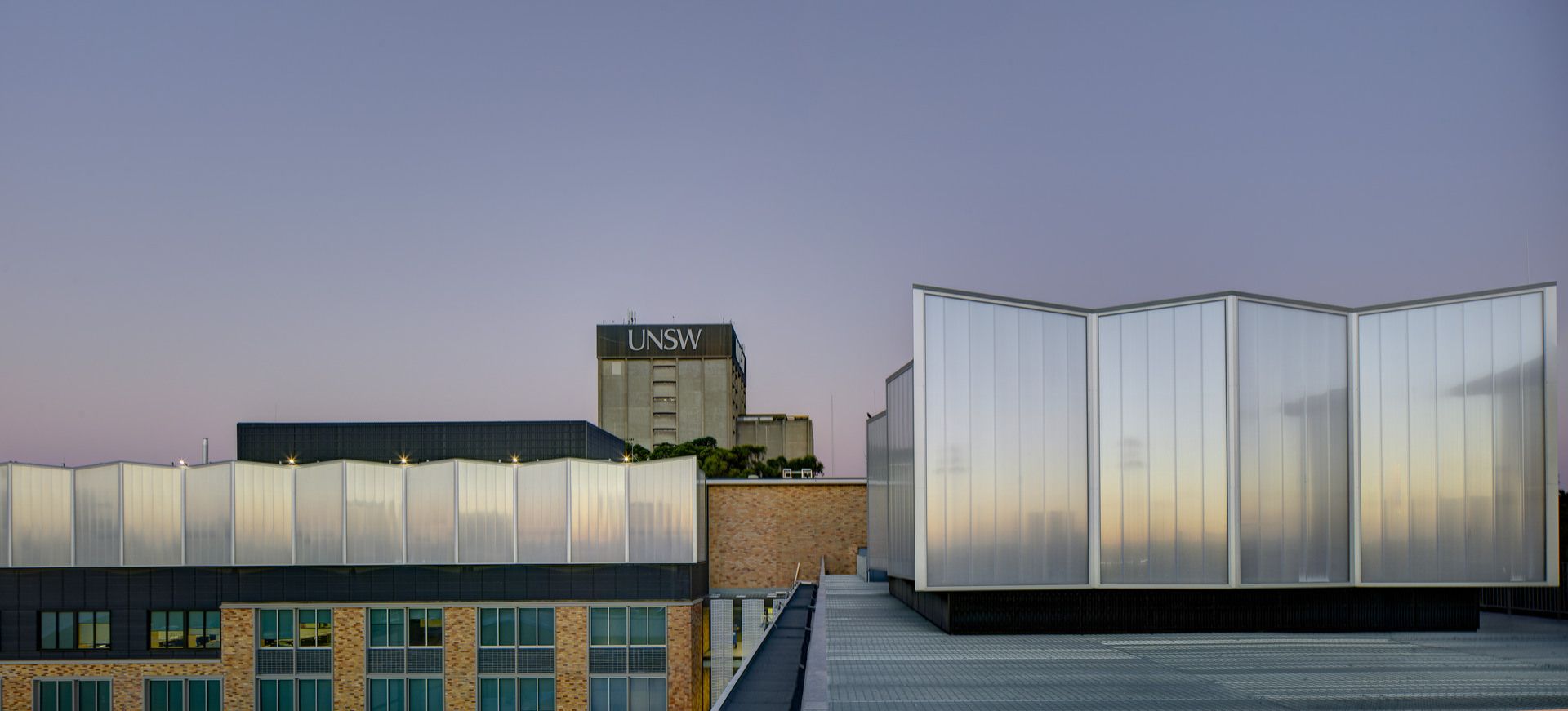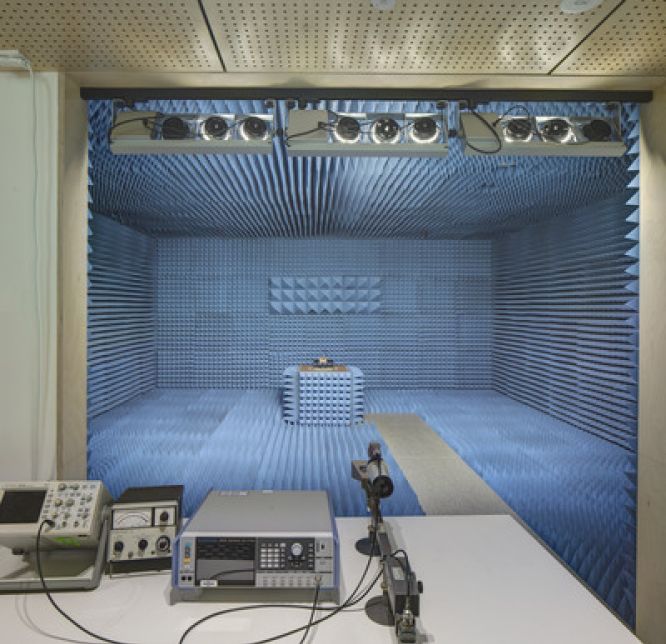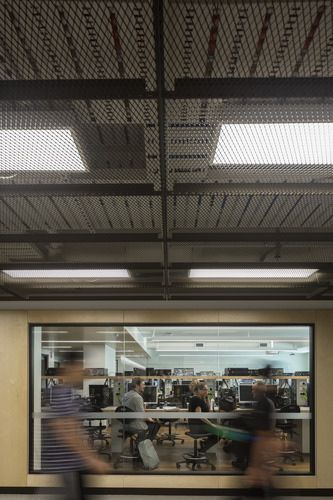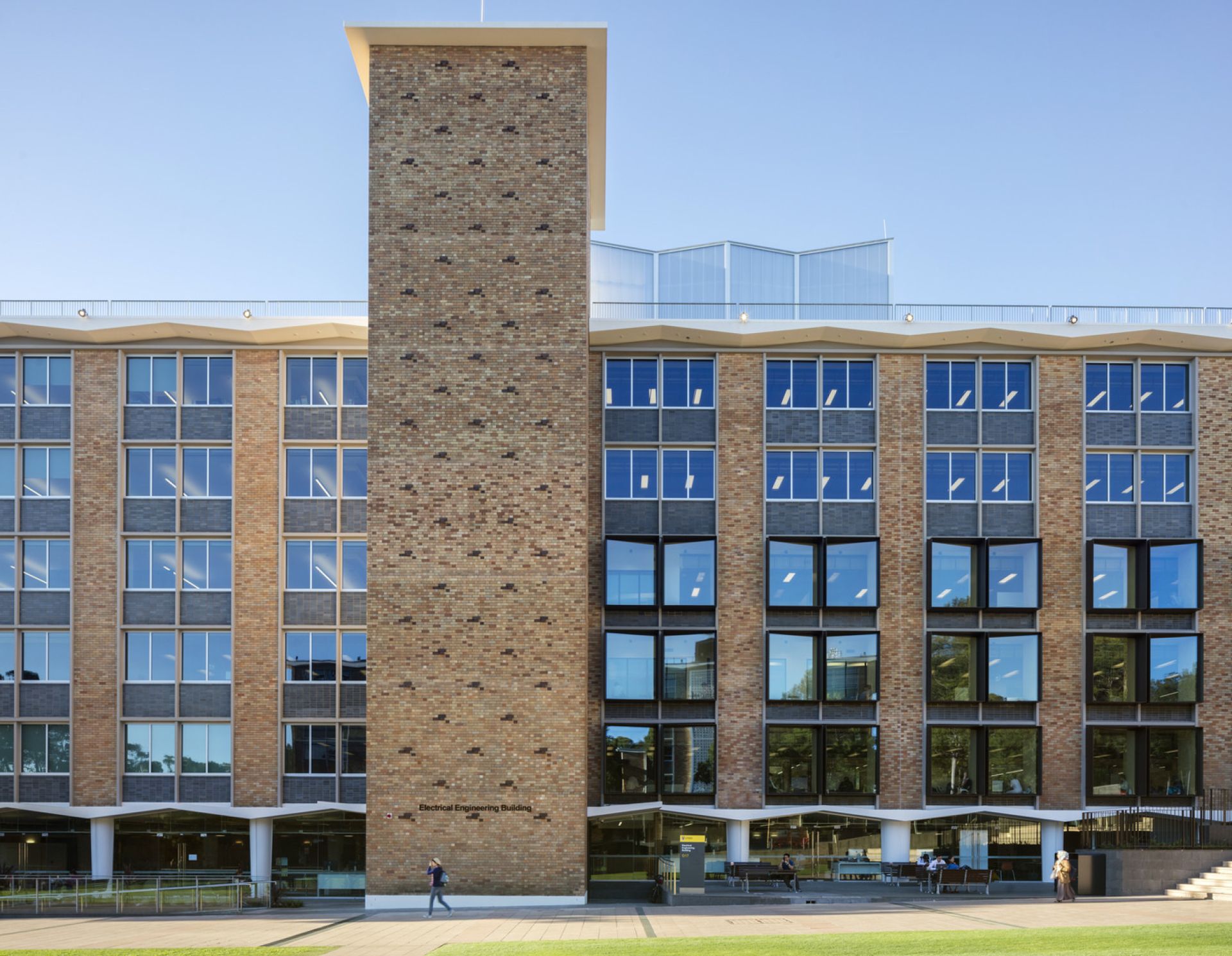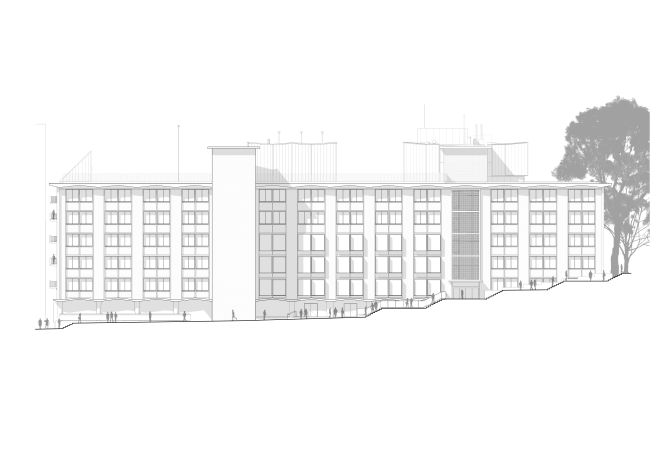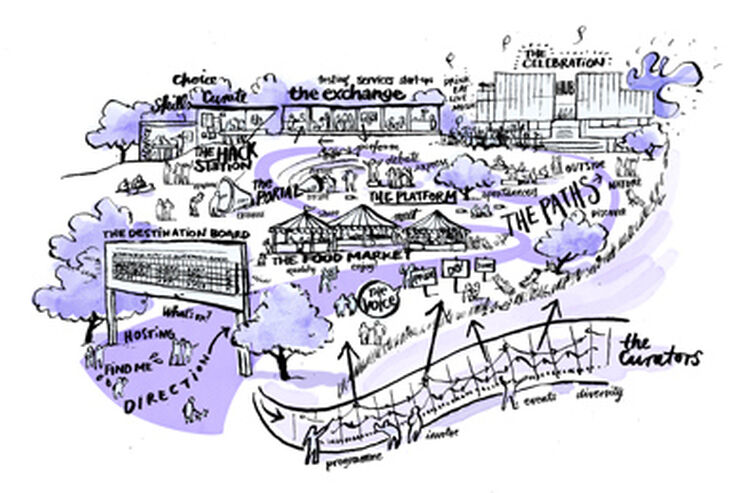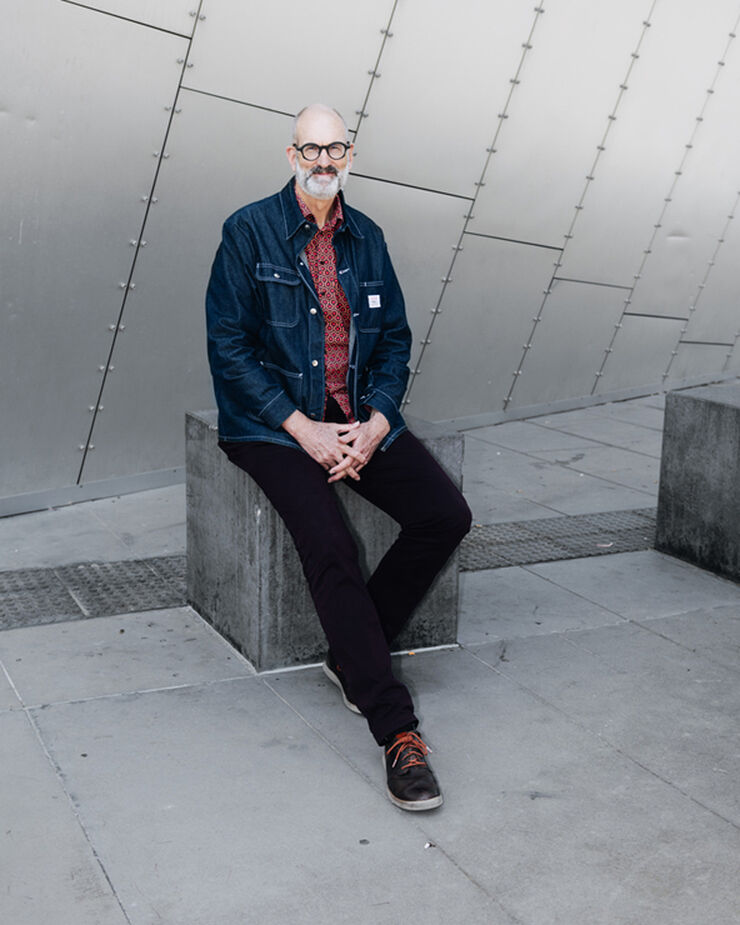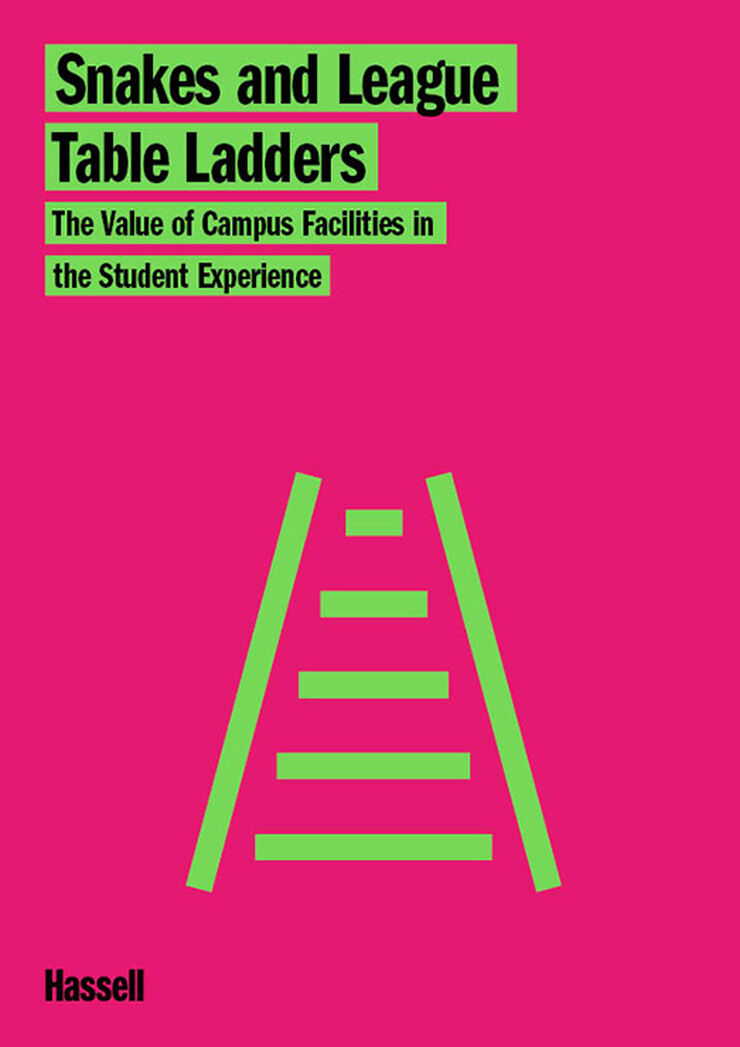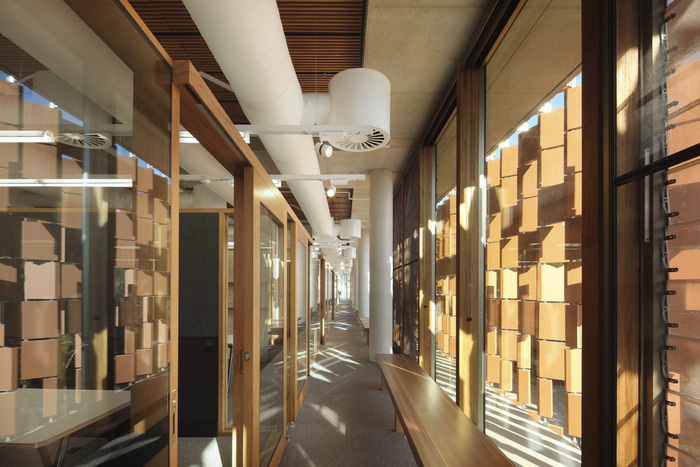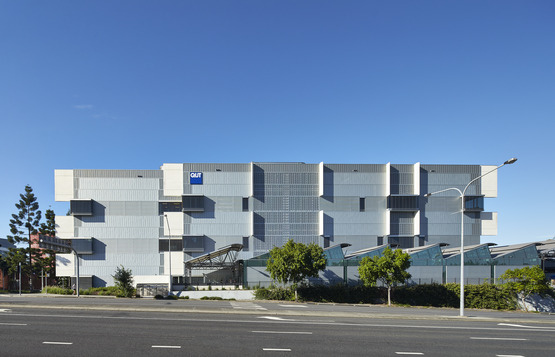Sustainability highlights
The building’s sustainable design features include:
- targeted energy efficiency 15% above building code requirements
- 5 to 6 star WELS-rated water fixtures, and
- at least 50% certified sustainable furniture, flooring, finishes and timber.
Concept
Our concept was all about revealing what happens in and around the EEB through transparency, materiality and light.
- Transparency: We varied the level and nature of transparency to accentuate context, function or activity within the building.
- Materiality: We celebrated the EEB’s original character through a cohesive palette and complementary new elements.
- Light: We modulated transparency and views to enhance the play of natural light throughout the building.
Awards
- 2019 Excellence in Construction, Tertiary Buildings ($75 to $100 M), Master Builders Association of New South Wales
- 2020 New South Wales Architecture Awards - Award for Educational Architecture
